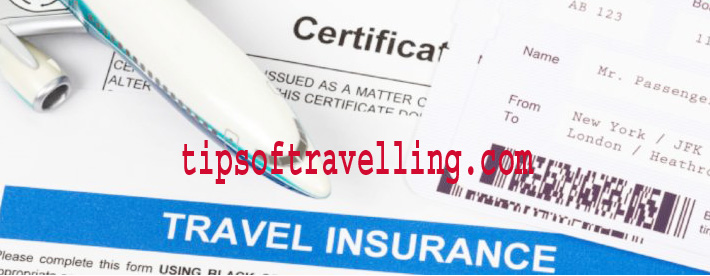How Much Is Travel Insurance Important

Table of Contents
Travel Insurance Important:
We are the study of more than 50 travel insurance policies shows. The average cost of travel insurance in the United States was 8 148. But not all policies are the same. Some are much wider than others, and as a result, the scope of spending between them can be more comprehensive. In this article, I will discuss How Much Is Travel Insurance.
Our study found that the cost of a complete travel insurance policy was on average 5 % higher than that of a basic travel insurance policy. The age of the policyholder also has a significant impact on their expenses.
Different types of travel insurance
When you purchase a policy, you will find a wide selection of travel protection plans. Typically, travel insurance is sold as a package, known as a comprehensive plan, which includes various coverage. Some insurers and comparison sites allow you to customize a policy by choosing the type of la carte coverage.
Travel medical insurance
These plans provide health insurance while you are away from home. Although these policies work like traditional health plans in some ways. You may not be able to use travel health insurance for routine medical events. For example, a regular medical checkup is not usually covered. Also, these policies often include coverage and restriction restrictions for pre-existing conditions.
they often exclude adventure sports such as skydiving or parasailing or competing in organized sports events. You may need to purchase a particular travel policy designed for adventure or competitive sports.
International travel insurance
Most likely, you will not have medical insurance work in the United States when you are traveling internationally, and Medicare will not provide any coverage when you move out of the United States with a few particular discounts. If you are planning to travel abroad, buying travel medical insurance can be very meaningful.
Trip cancellation, interruption, and delay
Tour cancellation coverage refunds you for prepaid, unpaid expenses if the tour operator goes out of business or you have to cancel the trip for any of the covered reasons described in the policy, such as:
Own illness.
Sickness or death of a family member who is not traveling with you.
Natural disasters.
Suppose the trip constraints due to the policy’s reasons cover the unutilized money spent on the insurance trip’s unused portion. Trip delay coverage reimburses you for expenses such as accommodation and meals if travel delay.
Many package policies cover all three. These policies differ from the offer cancellation waivers that cruise line and tour operators. The Insurance Information Institute says wages are cheaper, ranging from 40 to 60, and often include limitations. For example, according to the institute, waivers cannot refund your money if canceled immediately before leaving. Wages are not technically insurance policies.
Some companies provide additional levels of coverage at extra cost. “Cancel for any reason” coverage will cover a large portion of the trip cost, no matter why you go back. And some companies may charge extra to cover pre-existing conditions if you cancel due to medical treatment.
Baggage and personal belongings
This coverage pays you for luggage and personal belongings lost, stolen, or damaged while traveling. If you experience baggage delays of up to 12 hours longer than scheduled, some plans may also charge you for extra costs.
Insurance for your tenants or homeowners can cover personal items while you travel. It is best to review your homeowner’s insurance policy to determine the level of coverage it provides so that you do not end up paying for any benefits you already have.
Emergency medical assistance, evacuation, and repatriation
This coverage provides medical expenses if you are sick or injured on this trip. Treatment removal coverage pays to take you to the nearest hospital, and medical repatriation pays to take you to your home country.
Most travel insurance providers cover a wide range of services, but specific options vary. Some of the plans include support for dormitory services, restaurant referrals, tee time reservations, and more.
Many services also provide information before the trip, such as the necessary vaccinations. The only way to know what to include is to read the policy.
Accidental death and dismemberment insurance
This coverage provides your beneficiary together as a family member if you die in an accident while traveling. If you lose arms, legs, limbs, sight, speech, or hearing, accidental death and broken insurance policies also give you a portion of the money. Some plans only apply to extinction in a plane crash.
Rental car coverage
It pays to have your rental car repaired if damaged by debris, vandalism, or a natural disaster. The coverage does not include liability insurance, which pays compensation if you have caused an accident and are liable for damage to another vehicle or the treatment of another.
Ask your car insurance company if your policy will cover you when renting a car while traveling. U.S. car insurance policies generally do not cover you while driving in a country other than Canada
Car insurance requirements are complicated because they vary between countries. You can usually buy liability insurance from a rental car company. Learn about car insurance requirements by searching for auto insurance from the country on the U.S. Embassy website.
The average cost of travel insurance
We have collected travel insurance quotes for more than 50 policies using sample vacations gathered U.S. citizens living in New York State, going to the U.K. for a week in August.
Some of the principles included in our study are more comprehensive than others but a good representation of what most travelers can expect for such trips. Considering all the policies below, the average cost of travel insurance is $ 148.
Someone is leaving or going out will not have such a significant impact on their expectation rate (unless they are traveling to a dangerous place). We tested departures from different states in the United States, and when the final destination is the United Kingdom, the cost of a travel insurance policy usually remains the same.
One way to increase costs? We have maintained Final Destination (U.K.) and have seen that departures from most countries other than the United States result in a significant increase in average policy premiums.
It is challenging to know the reason behind this difference – perhaps it is because the value of the policies for which we were collecting quotations was favorable for U.S. exits. Anything outside of the U.S. can only be classified as a different risk level regardless of where it is going.
The average cost of basic vs. comprehensive travel insurance policies
We’ve taken a closer look at some relatively basic travel insurance policies and some of the less expensive carrier offers. Not surprisingly, the average cost of necessary procedures was lower than the average price of a more comprehensive plan.
The higher the travel insurance policy covers, or the higher the claim limitation, the higher the average premium. Policyholders have considerable control over travel insurance costs because they can choose what coverage they need. Conversely, if a homeowner needs to ensure their home.
There’s not much they can do to influence spending beyond shopping for a cheap carrier. Basic or silver layers generally have lower medical coverage or less claim limitation than higher gold or platinum layers.
Average travel insurance cost by an age
In addition to the type of coverage and the claim limit, a person’s age significantly impacts travel insurance costs. No matter what kind of policy someone buys, the price goes up dramatically. Our analysis below shows that premiums remain relatively flat for travelers between the ages of 1 and 30, but then the costs start to climb.
The most substantial growth occurs between the ages of 60 and 70. We have tried to collect quotes for travelers aged 100, 105, and 110, but no organization has provided quotes for our sample travelers of that age.
Factors that impact the cost of travel insurance
The factors that determine the cost of insurance for travel is depending on which insurer and policy you choose. For example, some travel insurance companies do not consider your destination when setting rates. Others do. The following are some of the most commonly used tools for determining travel insurance rates.
Trip cost and policy limits
When choosing a travel insurance policy’s limits, it is essential to consider all of your travel expenses, from flights to booking activities. One of the significant factors that affect your travel insurance rate is the total travel costs and your policy’s submission.
Types of coverage
A travel insurance policy can be very narrow or wide, so it is essential to consider the risks involved with your travel and choose the appropriate coverage combination.
The policy’s cost will increase as the circumstances you cover, such as adding dangerous sports coverage or increasing the reason you can pay.
Deductible
Choosing a higher discount policy will lower the travel insurance rate since you will pay more than you pocket when you file a claim.
Age and number of travelers
Elderly travelers, especially those over the age of 50, are considered more likely to file a claim because of their higher risk of getting sick or injured.
Length of trip
Long-term travel often comes with more expensive travel insurance rates, as there are more opportunities to cover losses.
Destinations
If you travel to areas with higher healthcare costs, this can increase the cost of travel insurance. Additionally, emergency transportation from some locations will be more expensive, so you may need a policy with a higher limit on accounts.
Health of travelers
If you have a pre-existing condition, you are usually charged a higher rate for a policy covering issues raised for issues related to these conditions or will be an exception to your coverage.
Travel insurance spending trends
According to the National Travel and Tourism Office, in 2018, U.S. citizens traveled 93 million times internationally. Millions bought travel insurance, and a recent AAA analysis found that 38% of Americans would travel abroad in the future.
Travel Insurance Association found that Americans spent more than 3.8 billion on all types of travel protection in 2018 – a 41% increase over the past two years.
Methodology
To access travel insurance costs in the United States, we first established a sample traveler by researching a collection of quotes for U.S. citizens living in New York State, going to the U.K. for a week in August, estimated travel cost of $ 2,500. We then collected more than 2,000 travel insurance quotes for 52 policies offered by dozens of companies.




